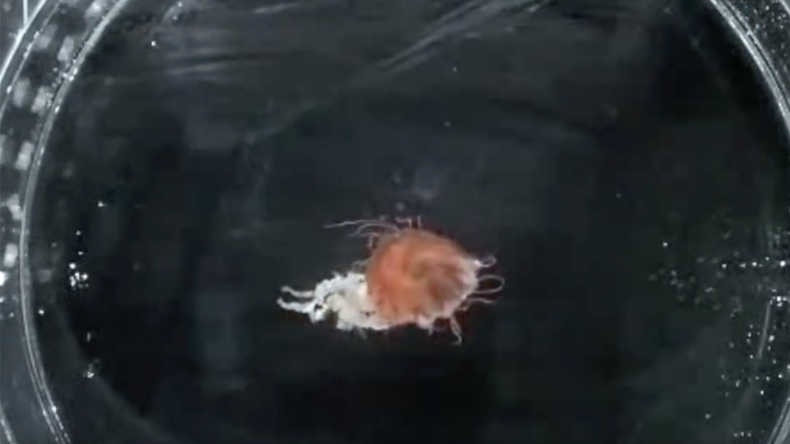Surf and turf: Lobster larvae feast on venomous jellyfish while hitching a ride (VIDEO)

Scientists have released fascinating footage of lobster larvae feasting on a venomous jellyfish, recorded during recent research into how the crustacean can survive eating the deadly stinger.
The incredible video shows the lobster larvae of the ‘slipper’ species riding on top of the jellyfish - while eating it alive.
Researchers at Hiroshima University in Japan produced the laboratory-filmed clip as part of their study into interactions between lobster larvae and jellyfish.
The team, led by Professor Kaori Wakabayashi, looked at why the lobsters were able to survive after swallowing the poisonous stingers - and the answer was revealed in their poop.
Researchers fed the lobsters a species of jellyfish called the Japanese sea nettle, and after examining their fresh faeces, they found the nematocysts neatly wrapped up in a thin membrane that the venomous needles couldn't penetrate, even when accidentally discharged.
This membrane seems to be produced in that unprotected middle section of the lobsters' gut. It seems these hardy critters have it all covered (literally!).
“Based on the contents of their feces, we think that the lobster larvae only digest fluid-type foods," said Wakabayashi.
Although lobsters can consume the tentacles without harm, it doesn’t mean they are immune to jellyfish venom.
In another experiment, researchers injected the crustaceans with venom - nine out of ten tested lobsters died.
This research is key to determining how to farm lobsters sustainably, Wakabayashi said in a statement.
"Farmed marine species are often fed sardines, which has contributed to a dramatic decrease in global sardine populations.
In the future, artificial food will empower farmers to provide their lobsters with convenient, sustainable and safe nutrition."
Jellyfish populations swarm the oceans of Japan and can be difficult to dispose of.
This research could provide a solution to that while also providing more sustainable food sources for farmers of lobsters.












